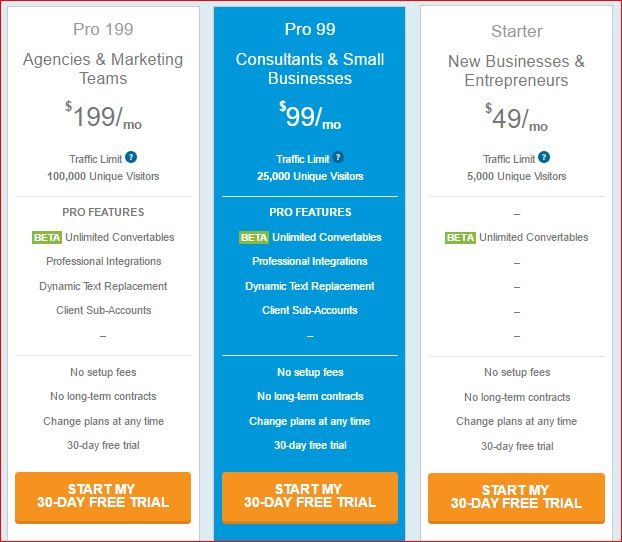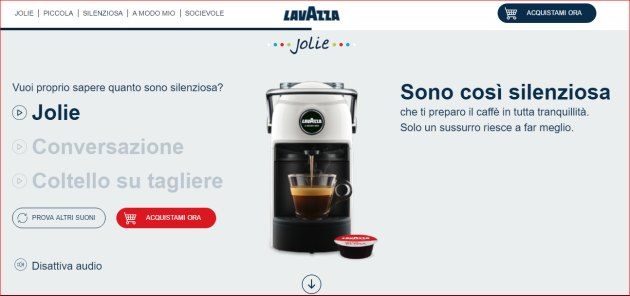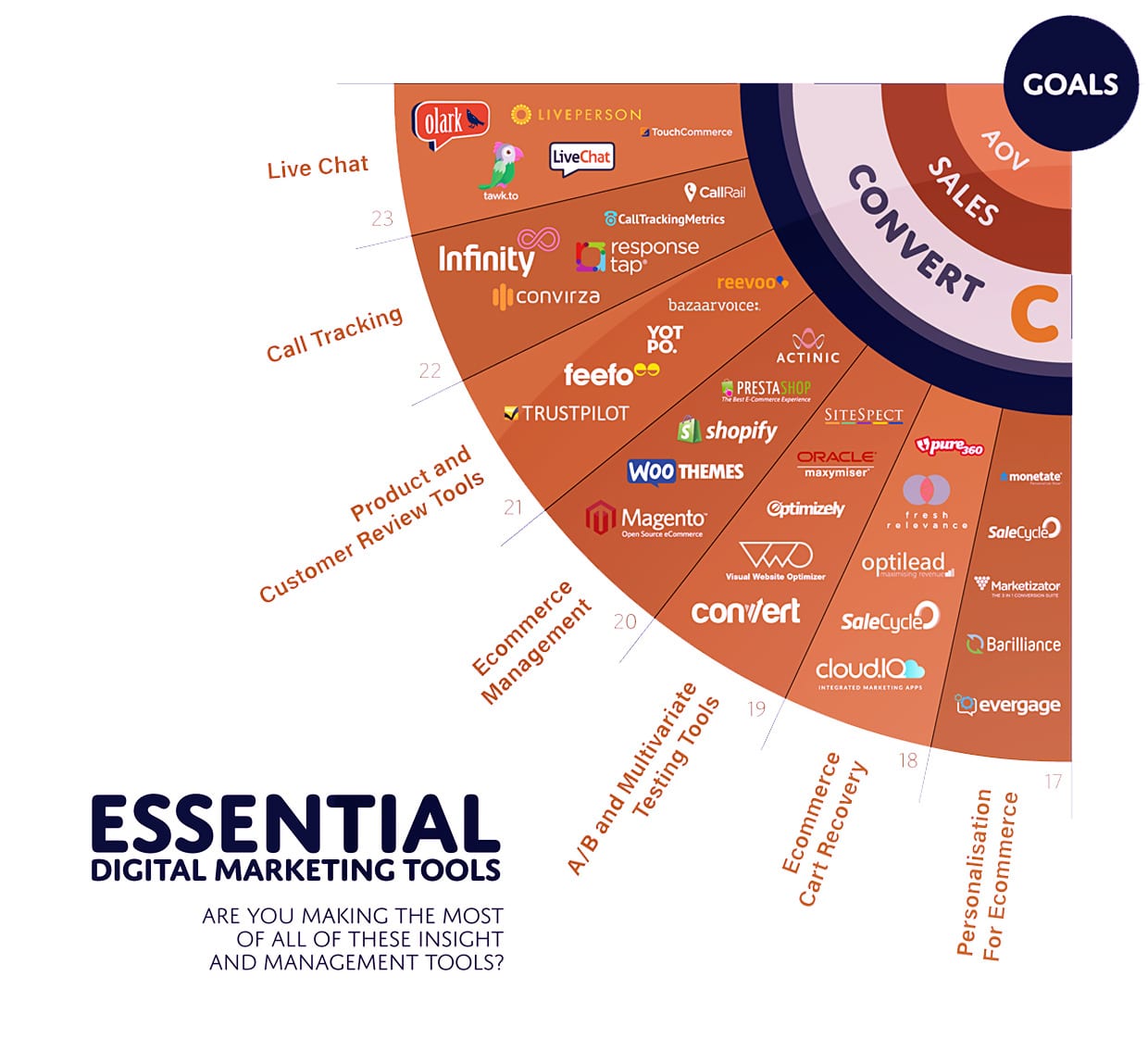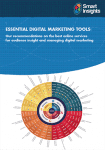3 bias cognitivi usati dagli esperti per creare contenuti persuasivi
Creare dei contenuti persuasivi non è semplice come si crede. Oltre ad adottare delle astuzie tecniche, bisogna conoscere alcune nozioni basilari di psicologia. In caso contrario, il destinatario dei tuoi messaggi non si comporterà come ti aspetti. E il 90% del tuo lavoro sarà stato inutile.

Ti sei mai chiesto perché alcuni messaggi pubblicitari e promozionali hanno presa su di te, mentre altri ti passano davanti agli occhi e quasi non li noti? E ti sei mai domandato perché alcuni annunci pubblicitari e promozionali ti spingono a compiere un’azione, mentre altri li abbandoni e passi oltre? Molto spesso è merito dei bias cognitivi, che fra un po’ conoscerai meglio. Ogni volta che:
- inserisci i tuoi contatti in un form
- ti iscrivi a una newsletter
- acquisti in un e-commerce
- richiedi un preventivo o una consulenza
- chiami a un numero verde
- scegli sullo scaffale un prodotto invece di un altro
- preferisci un Brand a un suo concorrente
- lasci un commento su un social,
sappi che hai deciso di farlo e che la tua decisione non avviene per caso. Ogni tua (re)azione è il risultato di precise scelte comunicative, studiate e realizzate per condizionarti e per provocare i tuoi giudizi, le tue preferenze e le tue decisioni in modo istintivo e inconsapevole.
Gran parte dei messaggi che ti fanno agire, infatti, sono costruiti secondo tecniche di copywriting e di comunicazione visiva che utilizzano bias cognitivi ed euristiche per influenzare un comportamento. È su alcuni meccanismi mentali che si basa la capacità persuasiva dei messaggi. Meccanismi che hanno poco a che fare col pensiero razionale e molto con quello associativo.
Devi elaborare una strategia comunicativa?
Se fai leva sui pregiudizi, sugli errori di valutazione e su determinate scorciatoie cognitive dei consumer, hai più possibilità di ottenere da loro le reazioni che ti aspetti.
Che si tratti di un claim, di uno script per uno spot radio, dei testi per un sito web, di una landing page, di una serie di email per una campagna DEM, dell’articolo di un blog, di una headline o di una semplice tagline, hai sempre bisogno di orientare una decisione, di indurre un’azione e di suscitare delle preferenze. In tutti questi casi, sfruttare gli studi condotti dalle neuroscienze e dalla psicologia sulle risposte intuitive della nostra mente può aiutarti a migliorare le performance delle tue azioni di marketing. In che modo?
Stimolando le risposte del target attraverso l’uso di input e segnali. Prima di vedere come puoi realizzare un messaggio che persuade grazie ai bias cognitivi e alle euristiche, cerchiamo di capire.
Bias cognitivi ed euristiche: gli inganni della mente
Autoinganni, decisioni prese senza usare i procedimenti della logica, giudizi errati che si basano su valutazioni dovute a false credenze. Insomma, chiamali come preferisci: la sostanza non cambia.
I bias cognitivi e le euristiche sono dei meccanismi mentali che permettono a ognuno di noi di farsi delle idee in modo immediato e senza perdere tempo, ma a partire dalle opinioni radicate nel nostro modo di pensare e vedere le cose, nella nostra cultura e nella nostra storia individuale e collettiva.
Perché li usiamo?
Perché sono economici. Ci fanno decidere e agire quasi con un colpo d’occhio, in maniera irriflessa ed emotiva, senza dover passare attraverso i passaggi di un calcolo, di una deduzione o di un confronto fra troppe alternative. Ci fanno risparmiare tempo e risorse, sono interessanti per questo.
Quando li usiamo?
Ogni volta che dobbiamo elaborare delle informazioni, soprattutto quelle con pochi dettagli o troppi, e decidere cosa fare. Il rovescio della medaglia dei bias cognitivi e delle euristiche è che ci convincono di qualcosa che, a uno sguardo più critico, non è esattamente come lo stiamo valutando o percependo o pensando. Quindi, ci facilitano la vita ma in molti casi ci prendono pure in giro, ci illudono.
Bias cognitivi e marketing
Questi stessi meccanismi che si innescano in automatico vengono utilizzati anche nel marketing e nella pubblicità per farci comprare, per confermare o cambiare le nostre preferenze di acquisto, per dare il nostro consenso a una proposta commerciale o a delle campagne di loyalty.
E vengono utilizzati in maniera tanto sottile che non te ne accorgi, come del resto non ti accorgi che i bias cognitivi e le euristiche si azionano naturalmente in gran parte delle tue esperienze quotidiane.
Ma ora è venuto il momento di vedere più da vicino come agiscono i tuoi, i miei, i nostri pregiudizi quando un annuncio o un messaggio ci invita a compiere un’azione e a fare una determinata scelta. Tieni solo presente che di bias cognitivi e di euristiche se ne contano un bel po’ e che qui ne tratteremo tre. Ovvero i più ricorrenti e usati nel marketing e nel copywriting.
Per approfondire: come scrivere un testo SEO Oriented
1. Ancoraggio (Anchoring Bias)
Immagina di trovarti in un negozio di elettronica, perché finalmente partirai per gli Stati Uniti D’America (questo è un viaggio che sogni di fare da anni e che i tuoi amici ti hanno regalato) e vuoi comprare una macchina fotografica per immortalare tutti i posti più belli che visiterai.
Ne vedi una con le caratteristiche che cerchi, ti piace e il prezzo è di 499 €. Che fai: la compri subito? Pensi che è troppo cara e stai lì a rifletterci, senza sapere se prenderla o no. Pensi di rinunciare perché non vuoi spendere così tanti soldi. A un certo punto ti si avvicina un addetto alle vendite e ti fa:
“Guardi che solo per oggi questa macchina fotografica può averla con lo sconto del 20%. Anziché pagarla 499 €, è sua per 399 € con un risparmio di ben 100 €!”.
Che fai ora? Magari pensi: “Be’, è la macchina che cercavo. A queste condizioni la prendo, mi conviene. E se non la prendo oggi, finisce che non la compro più o che dovrò accontentarmi di un’altra macchina fotografica con meno funzioni”. Come mai hai deciso di acquistarla?
Il confronto è centrale
Hai fatto un confronto grazie a un ancoraggio. È bastato un termine di paragone (399 € paragonati a 499 €) per farti percepire lo stesso prodotto come conveniente, da che era troppo caro.
Senza il bias dell’ancoraggio non avresti molto probabilmente acquistato quella macchina fotografica e il negozio non l’avrebbe venduta così facilmente. Ah, in questo caso il venditore ha inserito un altro innesco che fa leva sul tuo Bias dell’avversione alla perdita, sfruttando il principio di urgenza.
Hai notato il solo per oggi? È questa formuletta magica a farti pensare che hai soltanto oggi per fare un affare e che se non ti muovi a comprare lo perdi. Vuoi davvero perdere l’affare?  Eccoti un esempio di ancoraggio, preso online, e come di solito viene reso graficamente.
Eccoti un esempio di ancoraggio, preso online, e come di solito viene reso graficamente.

E se invece di farti soltanto acquistare un prodotto, vogliono farti acquistare un prodotto con un determinato prezzo, magari quello che dà maggiori guadagni all’azienda?
Stessa logica dell’ancoraggio, ma stavolta usata presentandoti più opzioni fra cui scegliere. E bada che tu sceglierai esattamente ciò che vogliono farti acquistare. Guarda qui che meraviglia di ancoraggio.

Esempio di ancoraggio con più opzioni
Il prezzo più alto (l’àncora) lo hanno messo a sinistra, perché noi leggiamo da sinistra a destra. Pochissime differenze di funzione fra la prima scelta e la seconda: cambia solo il numero dei “Visitors”. La terza scelta nemmeno la prendi in considerazione, perché ha funzioni troppo limitate o carenti. Anzi, per risparmiare l’equivalente in euro di 50 dollari a casa non ti porti quasi nulla.
Il pacchetto che vogliono farti acquistare è anche evidenziato dal colore azzurro: una calamita per i tuoi occhi. Furbetti, vero? Ora guardiamo il copy: sei un’agenzia di Marketing? No, sei un consulente di Marketing e lavori con numeri inferiori a quelli di un’agenzia.
Che vuoi di più per acquistare la seconda proposta? È perfetta, te lo stanno dicendo in tutti i modi. Pensi sia finita? Ora, come esempio di ancoraggio ti propongo una vera chicca.

Esempio di ancoraggio acustico Lavazza
Jolie è la nuova macchina da caffè piccola e compatta di Lavazza. Il brand ha scelto un preciso posizionamento per questo suo prodotto, ricavandolo dalle lamentele dei clienti di altri produttori di cialde, capsule e macchine da caffè. Vedi quanto è importante ascoltare prima di creare?
Idea differenziante e ancoraggio acustico
L’idea differenziante su cui Lavazza punta per battere i competitor è la silenziosità della sua Jolie, un’idea che va comunicata in maniera efficace e persuasiva. Il copy ti sta dicendo che è così silenziosa da prepararti il caffè in tutta tranquillità. Addirittura, più silenzioso di Jolie c’è solo un sussurro.
Riesci a farti un’idea di quanto è silenziosa Jolie leggendo soltanto il copy? No, vero? Dovresti ascoltarla e confrontare soprattutto il suo suono con la rumorosità di altri suoni quotidiani. E questo Lavazza lo sa. Detto, fatto. Vai qui, scrolla la landing e prova l’ebbrezza di un ancoraggio acustico. Poi mi fai sapere nei commenti se hai deciso che Jolie è davvero silenziosa come ti dice Lavazza.
E nel caso ti servisse una macchina per il caffè silenziosa, fammi anche sapere se ti ricorderai del suono di Jolie o di quello di un’altra macchina da caffè (sempre che i competitor di Lavazza abbiano usato un ancoraggio del genere, ma credo proprio di no).
Attenzione! Se stai pensando di utilizzare la tecnica dell’ancoraggio in un tuo contenuto, non offrire troppe possibilità di scelta. Un eccesso di opzioni, infatti, è alla base della paralisi della scelta, che si verifica quando dobbiamo sforzarci di confrontare troppe alternative. In un caso del genere, il carico cognitivo è talmente elevato che preferiamo abbandonare il campo e non agire.
Il rischio, quindi, è quello di perdere l’attenzione e l’azione del consumer. Sfrutta tre, massimo quattro alternative. Non andare oltre. E che non siano mai CTA: la call to action deve essere sempre una, chiara, ben evidente e di un colore a contrasto con lo sfondo.
2. Cornice (Framing Effect)
Ecco un altro bias cognitivo che condiziona le nostre preferenze e lo fa attraverso la cornice in cui ci viene presentato un prodotto, un servizio o un Brand. La cornice, o contesto, è fondamentale per influenzare le percezioni o le interpretazioni dei consumer, e usando l’effetto Framing è possibile mettere sotto una luce positiva quello che potrebbe essere un aspetto negativo, e viceversa.
Esempio: la tua azienda è nata da poco e devi posizionare i tuoi prodotti in un mercato con concorrenti dalla storia consolidata? Usa il copy per mettere in “cattiva luce” i competitor presentandoti come innovativo, all’avanguardia, tecnologicamente più avanzato e inserisci implicitamente queste caratteristiche nei benefici che otterranno i consumer acquistando da te e non dai tuoi concorrenti. Crea prima un contesto di negatività e usalo per evidenziare in contrasto i benefici positivi che si ottengono scegliendo solo i tuoi prodotti.
Come funziona il Framing?
Se cominci a farci caso, poi, vedrai che nel marketing e in pubblicità vengono usati soprattutto i Framing della perdita e del guadagno. Servono per spingerti a compiere un’azione che ti permette di evitare un problema o che ti garantisce un beneficio futuro.
Il Framing della perdita lavora con la paura e prospetta scenari terribili, se non si compie un’azione capace di scongiurare un determinato pericolo. Azione che coincide con quella del messaggio.
Il Framing del guadagno, invece, punta tutto su aspetti favorevoli e ti promette, in maniera esplicita o inconsapevole, dei vantaggi pratici e un plus di soddisfazioni solo se compi l’azione desiderata.
Per renderti meglio l’idea di come agiscono questi due Framing, guarda tu stesso i due spot sotto. In entrambi si parla di automobili, ma da due prospettive diverse grazie a due cornici differenti. Come cambia la tua percezione? Riesci a descrivere questa differenza? Ti aspetto nei commenti.
3. Effetto carrozzone (Bandwagon Effect)
Quando ti vesti segui la moda? Possiedi un iPhone Apple o lo hai desiderato? Sei un fan di Breaking Bad? Basta un sì a una sola di queste tre domande e rientri già fra le “vittime” dell’effetto carrozzone, probabilmente il bias cognitivo più potente fra quelli che si conoscono.
Cos’è l’effetto carrozzone, ti chiedi? Quel meccanismo mentale che ti fa fare ciò che fa la maggior parte della (tua) gente, per emulazione, perché abbiamo bisogno di sentirci rassicurati. È chiaro il concetto. Perché senza una tribù d’appartenenza è come se non avessimo un’identità.
Pensa ai contenuti lasciati dagli utenti. Pensa alle recensioni su TripAdvisor. Sono sicura che se sei alla ricerca di un nuovo hotel per una vacanza o di un nuovo ristorante da prenotare, la tua scelta cadrà su quelli che hanno il maggior numero di recensioni positive (ragion per cui, oggi, le recensioni positive vengono anche comprate da albergatori e ristoratori, ma questo è un altro discorso).
Se devi prendere una decisione e non hai appigli, un modo per convincerti a farlo è puntare sull’effetto carrozzone. Grazie al Bandwagon Bias sarai portato a dare ascolto agli altri e a fare come loro, sempre che tu ti identifichi in coloro che ti stanno testimoniando la loro esperienza.
Il ruolo della testimonianza
Ed ecco che uno dei modi per sfruttare l’effetto carrozzone nel marketing è quello delle testimonianze (i testimonial in pubblicità). Se devi comprare un divano, di’ la verità, ti fidi più di cosa ti dice l’azienda produttrice o dei pareri di chi lo ha già acquistato, usato e messo alla prova?
Ti fidi più dell’opinione di un consumatore: ha le tue esigenze, vuole i vantaggi che vuoi tu, magari appartiene anche al tuo ceto sociale, ama le stesse cose che tu ami e non è interessato a venderti un prodotto. Non sai decidere fra le proposte di due Brand diversi? Stesso procedimento, stesso bias.
Passiamo la parola al copywriter professionista: come utilizza il Bandwagon Effect? Con le testimonianze dirette – che più sono di persone autorevoli ed esperte, più tu ti lascerai condizionare – e con i numeri (e la notorietà dei clienti). Guarda tu stesso: ecco qualche esempio concreto.


Fra un prodotto o servizio corredato dai pareri degli altri e un prodotto o servizio senza testimonianze, tu sarai portato maggiormente a scegliere quello con dei feedback (sebbene anche un copy che non punta sui testimonial, se ben fatto, riesca a persuadere e a convertire altrettanto efficacemente). Sappi, inoltre, che l’uso dell’effetto carrozzone non ha limiti. Lo trovi:
- nelle landing page;
- nel menù di un sito web (come pagina);
- all’interno delle headline;
- nell’oggetto di una newsletter;
- come tema di un articolo di blog;
- nelle sales letter;
- in una brochure
- in un catalogo;
- nelle pagine prodotti di un e-commerce
- e così via.
3 bias cognitivi per creare contenuti persuasivi
Click To Tweet
Avvertenza finale per i copywriter
Credo di sapere a cosa stai pensando ora, alla fine di questo lungo articolo sui bias cognitivi, che intanto spero ti sia piaciuto: “Ok, tutto interessante, ma funziona davvero e funziona sempre così?”.
No, non funziona sempre e non funziona sempre così, perché la psicologia e le neuroscienze sono saperi empirici. Fissano un’ipotesi, osservano, registrano delle reazioni e traggono delle conclusioni.
Va da sé che stiamo parlando sempre di pensiero intuitivo, di scelte emotive basate su pregiudizi e di comportamenti umani. Comportamenti che cambiano perché si adattano, quindi in questo ambito non esistono leggi valide per sempre e per tutti.
La tua opinione nei commenti
Del resto, nel marketing vale la regola dei test perché non è possibile prevedere con esattezza come reagiranno i consumer. Una cosa, però, è certa. Se ci tieni alla forma e ti offro uno yogurt con “Solo il 10% di grassi” e uno con il “90% di grassi in meno”, so già quale dei due sceglierai. Scommettiamo?
Accetta la sfida: dimmi nei commenti quale dei due scegli!
Ciao! 3 bias cognitivi usati dagli esperti per creare contenuti persuasivi è un post scritto da Riccardo Esposito. Scarica l’e-book gratuito "Keep Calm and Write" e seguimi su Google Plus.





 This is essentially where I’m trying to stand out from the pack in Google search results. If you’ve performed a search in the last five years, you know that it doesn’t just look like 10 blue links anymore. There are a lot more rich options for how your snippet, the search engine result position that you appear in, can look to searchers, and that can drive a lot more traffic.
This is essentially where I’m trying to stand out from the pack in Google search results. If you’ve performed a search in the last five years, you know that it doesn’t just look like 10 blue links anymore. There are a lot more rich options for how your snippet, the search engine result position that you appear in, can look to searchers, and that can drive a lot more traffic.
 Next, we want to think about non-Google sources of traffic or non-google.com web search sources of traffic. For example:
Next, we want to think about non-Google sources of traffic or non-google.com web search sources of traffic. For example:
 Yes, links still matter. Yes, they are still critical for rankings. You will need a lot of links from good places that are editorially pointing to your content, to your website, in order to rank well.
Yes, links still matter. Yes, they are still critical for rankings. You will need a lot of links from good places that are editorially pointing to your content, to your website, in order to rank well.
 So you’ve done all this stuff to serve searchers well, to earn their trust and their traffic, and now we have to realize two things.
So you’ve done all this stuff to serve searchers well, to earn their trust and their traffic, and now we have to realize two things.




